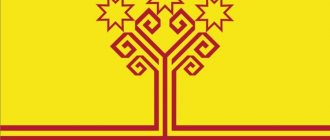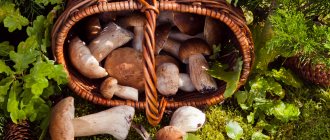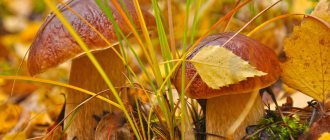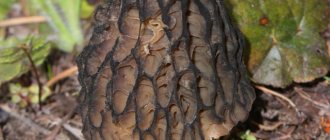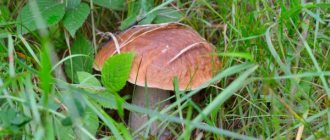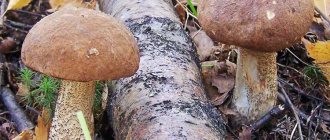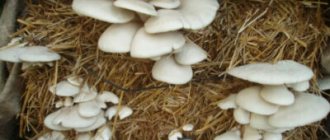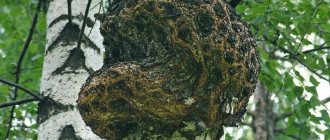Mushrooms of the Kurtatinsky Gorge
The forests of the Kurtatinsky Gorge are rich in the gifts of nature. Expanse is here for mushroom lovers. From early spring to late autumn, the weapon of mushroom pickers is an old knife and a basket of willow twigs. To understand them, you must at least once cut off a strong, elastic mushroom and put it in a basket.
It’s good to go with an experienced mushroom picker who knows the forest as well as his own pantry. There are hundreds of species of mushrooms. Old trees grow rock-hard tinder fungi. Peasants in Russia went to collect tinder fungi with an ax and bags. How far is this from mushroom poetry? Maybe, but well-boiled tinder fungi are a real delicacy, and none of them are poisonous. Coral mushrooms grow in young forests.
There is even a ram mushroom, a curly-haired fellow weighing several kilograms. Well, the fact that there are trees covered with honey mushrooms is a common thing. In mountain meadows you come across white pear-shaped balls, the size of a good watermelon. This is a valuable puffball mushroom, ranking second in calorie content after the famous boletus mushroom. On the plains there are smaller raincoats. Boys make firecrackers from overripe ones.
There are many surprising and interesting things in the mushroom world. Mushroom pickers have no less stories than hunters. For example, I really like the story about how Napoleon’s personal chef bet with the quartermaster that he would even eat… the skin with mushroom sauce. And he fed the courtiers with the emperor’s old fencing glove - the dish made from ordinary rain mushrooms, which grow in abundance in meadows and young pine forests, was so tasty.
The psychology of mushroom pickers is very difficult to understand. Many people's mood deteriorates when the sky is gloomy in the morning and there is no sun. And the mushroom picker, like a child, rejoices in the pouring rain, the damp morning, the forest through which fogs wander. This is mushroom weather. His legs are buzzing, his back is aching from countless bows, his eyes are tired, but he feels good. There is no more pleasant moment for him than the one when a mushroom cap flashes in the grass. Mushroom hunting is not always successful.
Sometimes you fill your backpacks with mushrooms, take off your shirt and don’t know where else to put them. And sometimes you walk for hours and only find three or four russula. The mood is spoiled. But not for long. A real mushroom picker is always an optimist. He believes that the main trophy is ahead. Mushrooms, like hunting and fishing, love consistency. If you haven't taken your guns off the wall or checked your fishing gear for several years, you'll have to start all over again. It’s even harder with mushrooms: you need to know mushrooms well, which ones are good and which ones are not.
The hunting passion for mushrooms came to me unexpectedly. One summer, I was riding on a bus along the Kurtatinsky Gorge and became an involuntary witness to a conversation between two guys who were enthusiastically talking about mushrooms.
“Last Sunday, in the clearings near Gusyr, I collected a whole basket of honey mushrooms,” said one. - And I went for Dzivgis. There, in the pine forest, they apparently and invisibly butter,” another boasted.
As if by chance, I inquired about the mushroom places in the gorge.
— If you are interested, you can stop at the second bridge over Fiagdon. There, from the clearing, immediately go into the forest and collect honey mushrooms. In twenty minutes there will be a basket of mushrooms,” one of the interlocutors answered me affably.
There were three of us and we knew well this vast clearing above Fiagdon, lined with young walnuts. Getting off the bus, we climbed about thirty meters steeply and entered the forest. Having walked a kilometer along the old Kurtatinsky road, overgrown with mint, hogweed, nettles and burdocks, we came across only a few overripe wormy mushrooms. We were about to leave when, fortunately, I climbed higher up the slope into the forest thickets.
Under the trunks of powerful beech trees, I unexpectedly saw a lot of mushrooms. They grew in clusters, large, with red caps and dazzling white refined legs and plates. Nearby, like generals, stood yellow, fleshy giants weighing a kilogram. It seemed as if drops of fat were dripping from their spongy layer. And there are other forest giants nearby. We happily pounced on the mushrooms and soon filled our string bags to the brim.
We didn't know much about mushrooms. Along with the good mushrooms, there were also toadstools and fly agaric mushrooms. The engineer of the Fiagdon processing plant, a great lover of nature, who advised us to pick mushrooms, fell behind a little, and we impatiently sorted through our string bags.
“All this needs to be thrown away,” the engineer said decisively, looking at the mountain of our mushrooms. With great regret, we had to throw away our harvest without trying the fatty forest “giants” - flywheels, refined russula, elastic, delicious milk mushrooms, and saffron milk caps.
But after the failure, I suddenly developed a passion for mushroom picking. The “third hunt” finally captivated me and now, it seems, forever. Although, to be honest, I never saw such an abundance of mushrooms as I did then in the Kurtatinsky Gorge. But you might be lucky. Some Saturday or Sunday, visit that treasured area.
After passing Dzuarikau, Tagardon, Gusyra, stop at the second bridge over Fiagdon. At the old spreading pear tree, go up to the clearing. And there is forest and mushrooms.
In the Kurtatinsky Gorge several times I collected whole buckets of champignons in the mountain meadows. This mushroom loves low grass, where cattle walk. And it is rarely found in hayfields, in dense grass. He also loves meadows near the river, where he grows in groups of 15-20 pieces. You are walking through a green meadow, and you look - something is white in the distance.
Anyone who has not collected these beauties from the meadows will be mistaken and think - a piece of paper or a white pebble. But the mushroom picker has a trained eye. Neither a river nor a mountainside can stop him. I noticed the white caps, took a basket and went on a hike.
The champignons that grow in Fiagdon are excellent, large in size, and fleshy. Only when picking, you need to know that the champignon has pink plates under the cap, while the overripe champignon has silver-brown plates. And nearby, in the mountain meadows, another mushroom comes across. Exactly like a champignon, but with white plates. You shouldn't take it. And you have to keep an eye out - sometimes you come across a false champignon - a poisonous toadstool. It is not difficult to distinguish it. The cap is covered with yellow flakes, the plates are white, and there is a ring-collar along the stem.
In the forests of North Ossetia, unfortunately, rarely anyone is lucky enough to find a real porcini mushroom, the king of the forests - boletus.
But on the other hand, in the fields, forest clearings and even outside the outskirts, you see mushrooms every day in spring, summer and autumn, which are second only to boletus in terms of nutritional value and taste, and do not turn black in marinade or salt.
We're talking about a raincoat. They came up with a dozen names for it: grandfather's tobacco, pepper shaker, hare potato, pear-shaped raincoat... But few people know that this is a very tasty mushroom that is rarely collected by anyone. It needs to be picked young. You break it, and it’s like a white marshmallow. If it gets old, the flesh hardens, turns black and gradually dries out, turning into spores, which the boys then clap in the meadow.
This mushroom has an inedible double - the so-called false raincoat. But it is not difficult to recognize him. The flesh of the false one is black and, by slightly breaking it, you can immediately see it. Then the false raincoat has no legs. A kind of ball, rooted directly to the ground, but there are very few of them.
In the mushroom kingdom it is difficult to choose a king. Even without picking mushrooms, you can’t help but admire them. They, like flowers, enliven nature. When you see a flock of champignons in a green meadow or in a dark pine forest you accidentally notice butterfly caps interspersed with red-brown little teas, tiny garlic and cloves - you immediately perk up.
White, yellow, red... What colors do mushrooms come in? They are collected in baskets and buckets. Forest mushrooms are especially productive. Another rotten stump is a whole basket.
On a soft forest floor of blueberries and mosses, near a perennial pine tree or a big beech tree filled with juice, the king of mushrooms sparkles like an emerald. You can immediately distinguish it from other mushrooms. His posture is portly, he is all plump and fleshy. Under the dark brown cap is a whitish-greenish sponge, but none of the mushrooms have such a curly leg.
White mushroom is the most delicious and nutritious. In soup, in a frying pan, in drying, in a jar of vinegar, its white flesh does not turn yellow or black and retains its unique mushroom aroma for a long time. It’s just a nuisance: in a whole day you pick two or three royal mushrooms and it’s a shame to fry them.
You put them in a saucer with moss and they sit until they wither. And then, looking at them, you remember how you started picking mushrooms, how you saw them in the forest: a squirrel was resting on a nearby pine tree, some unfamiliar bird was singing, enjoying the sunny morning, and drops of dew fell from the barberry bush.
Inedible
Inedible mushrooms growing in Komi should be distinguished from inedible and poisonous species that are found in all regions of Russia. They contain toxic substances and are therefore unsuitable for consumption.
They can be painted either yellowish or dark brown with a matte tint. When cut, it does not change color at all, or becomes pinkish. The second group includes conditionally edible and little-known mushrooms. They are used for food, but have very low taste and nutritional value. They can only be found in areas with cold and temperate climates.
Inedible mushrooms of the republic:
- Amanita virosa (Amanita virosa). The cap reaches 30 cm, at first hemispherical, then cushion-shaped, flatly spread, initially convex with a tubercle in the center, becoming funnel-shaped with age. The color of the cap varies from bright red to brown-orange, with numerous white or yellow flake-like warts, often fading to white flakes. The skin is smooth, oily, later slightly sticky. The surface of the cap is slightly wavy, velvety fibrous. Descending plates are frequent, wide, white or yellowish, fading to white over time. The leg is hollow, cylindrical, often curved, white, smooth above, pinker below the ring. The flesh of the leg is white, turns blue when cut, and has an unpleasant odor.
The fly agaric is smelly. - Gray rower (Tricholoma portentosum). The cap reaches 10 cm in diameter, at first hemispherical or conical, later cushion-shaped, convex. Color from beige to grayish-brown, smooth. The leg is short, cylindrical, smooth, dense, white. There is no ring, the plates are frequent, narrow, and short.
Gray row - Pear leaf spider plant (Cortinarius pyrophyllus). The cap is up to 6 cm in diameter, conical in shape, first bell-shaped, then convex, sometimes funnel-shaped. The color is light brown, reddish, fading to yellow-brown with age. Initially, the cap is covered with a powdery coating, which in the center becomes dry and cracks. The leg is up to 10 cm long, 7 cm high, up to 2 cm in diameter, cylindrical. The color is white, slightly darker than the cap. The plates are frequent, descending, thin, white.
Preparatory stage of salting
- Sorting. If you collect different mushrooms, then they must be placed separately from each other, because different mushrooms take different times to cook. Soaked and boiled mushrooms can be combined before the pickling process itself, in the case of preparing an assortment of mushrooms.
- Cleaning. All dirt must be removed from the mushrooms and rinsed thoroughly in running water. If the mushrooms are very plastic, then the caps need to be separated from the stems. It is also necessary to remove the skin from russula and boletus. If the mushrooms are large, then they can be cut for further convenience.
- Soaking. This process is necessary for laticifers; its time directly depends on how bitter the mushroom is.
The exceptions are saffron milk caps and russula; for other mushrooms the deadlines are as follows:
- One day for white milk mushrooms;
- From one day to one and a half days for waves;
- From two to five days for black milk mushrooms, white milk mushrooms, white milk mushrooms, white milk mushrooms, and white milk mushrooms.
For the best effect, the water needs to be changed two or three times a day, some do this every four hours. To prevent the mushrooms from souring, add a little salt and citric acid.
Poisonous
There are up to 200 species of poisonous species growing in the forests of the region, and most of them have no antidote. The most common in Komi are pale toadstool, stinking fly agaric, satanic mushroom, cobweb, dung and common false puffballs, gall mushroom, false chanterelles, purple row, champignons, prickly puffball, umbrellas, thin pig and others.
All these poisonous species have much in common, but there are also differences. Toadstool is one of the most dangerous mushrooms for children and animals. It is poisonous even to adults. In young people and children, intoxication may not even appear, but within a few days serious health problems begin. Irreversible changes occur in people over 50 years of age: jaundice appears with an enlargement of the liver and spleen, bleeding appears, and after a few months kidney failure develops.
White grebe.
Satanic mushroom is also a very dangerous species. If consumed, it can be fatal. His hat has a characteristic lilac color, and this feature is passed on to his entire family. Therefore, the satanic mushroom is difficult to confuse with other brothers.
False satanic mushroom
The dung mushroom is one of the most poisonous in the forests of the Komi Republic. His false brothers, who are similar in appearance to him, are especially dangerous. So, they may have red or brown caps and white edges. They can only be grown for sale on special industrial plantations.
False chanterelles look similar to real ones. Only when you touch it can you immediately understand that this is a false specimen. But distinguishing a real mushroom from this one is quite difficult.
1- Yellowing chanterelle 2- False chanterelles
What is collected by season?
- In the spring, mushroom pickers in the Komi Republic collect morels and strings. Morel mushrooms are collected in April. For this mushroom you need to prepare a place: first you need to make a hole 10-15 cm deep, place several dry birch twigs in it, and then lay out a layer of moss or leaf litter. Pour in soil and compact it. All this is done to give the mushroom stability. Next, you need to wait until the mushrooms sprout under the snow. After this, they must be cut with a knife and placed in a pan. Morels can be dried for the winter.
- In summer, mushrooms, summer mushrooms and other mushrooms are found. Honey mushrooms appear in July. Whole families grow up. They can be dried, salted, pickled, fried and even cooked in soups. Boletus mushrooms are harvested from late June to August.
- In autumn, honey mushrooms, puffballs, boletus, chanterelles, saffron milk caps, aspen mushrooms, etc. appear.
Chanterelles
For them it is better to choose the cold method. The mushrooms must first be kept in a salty-acidic environment for 24 hours. To do this, add 2 grams of citric acid and 10 grams of salt per 1 liter of water; this is considered the basic recipe. Not everyone knows how to pickle chanterelle mushrooms this way, so you need to look at everything in more detail. You will need for 1 kg of product:
- 2 dill umbrellas;
- 3 black peppercorns;
- 3 laurel leaves;
- 1 tbsp. l. vegetable oil;
- 3 cloves of garlic.
You need to pour boiling water over the chanterelles and wait until the liquid drains. Garlic is chopped into slices. Place dill, bay leaf and pepper on the bottom of the jar. Then a double layer of mushrooms is laid out, everything is sprinkled with salt and garlic, so you need to alternate.
Mushroom places of the Komi Republic
Mushroom pickers know one of the most popular places for “silent hunting” - the “Yarensky Swamps” in the Troitsko-Pechora region. There you can collect both white and chanterelles, boletus, boletus and saffron milk caps. These are all edible species, but what is especially interesting is the fact that it is in the Yarensky swamp that the most unusual mushroom grows - “moss moss”.
This is a perennial plant that serves as food for animals. It is also called reindeer moss. Many people who do not have their own dacha or garden love picking mushrooms.
For example, in Syktyvkar, not far from the airport, there is a small town - Sosnogorsk. In its forests grow chanterelles and russula, as well as white ones. But the best mushrooms are found in the forests near the village of Yarega. This is where you can find saffron milk caps and chanterelles. You can also find excellent mushrooms on Yarenskaya land. White and aspen boletuses are especially good for collecting. They occur quite often. And also don’t forget about such a delicacy as boletus.
Soaking
Before you pickle mushrooms at home after slicing, you need to go through one more preparatory stage. Most varieties require pre-soaking, and the duration of such preparation will vary. Eg:
- for valuable species (white, champignons, boletus, boletus, oak) - overnight is enough;
- for russula, trumpets and milk mushrooms it will take about 5 hours;
- valui, black milk mushrooms, violins and bitters are distinguished by their content of a large amount of bitterness; they will have to be prepared for at least 5 days.
Of course, at this time it is necessary to constantly change the water, ideally this is done every 3 hours. Unfortunately, this is not always possible to achieve, especially at night. If the product is quite heavily contaminated, you can first keep it in salted water for 4 hours (3% salt per total volume), and use clean liquid for the remaining time.
